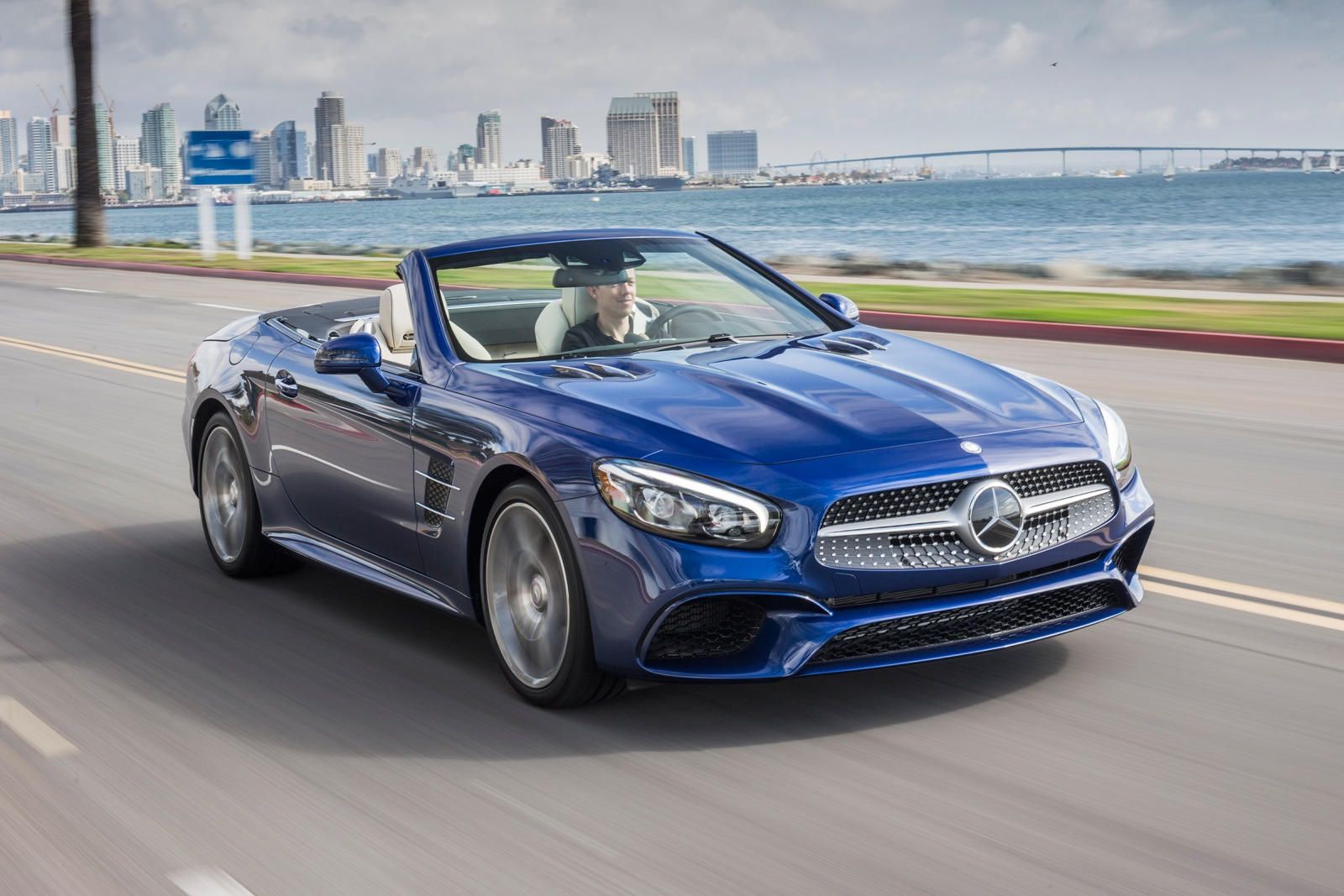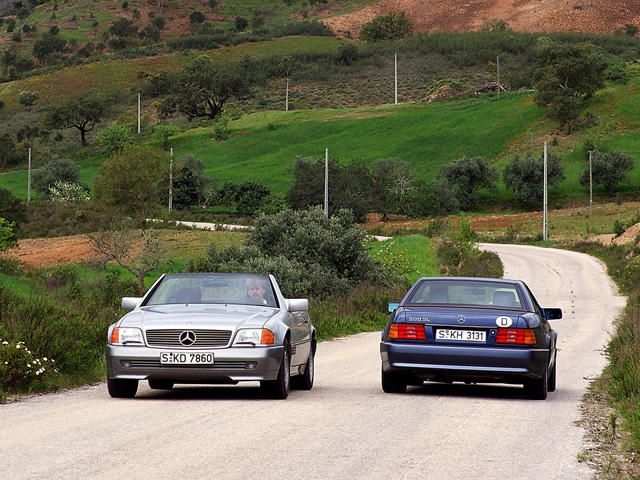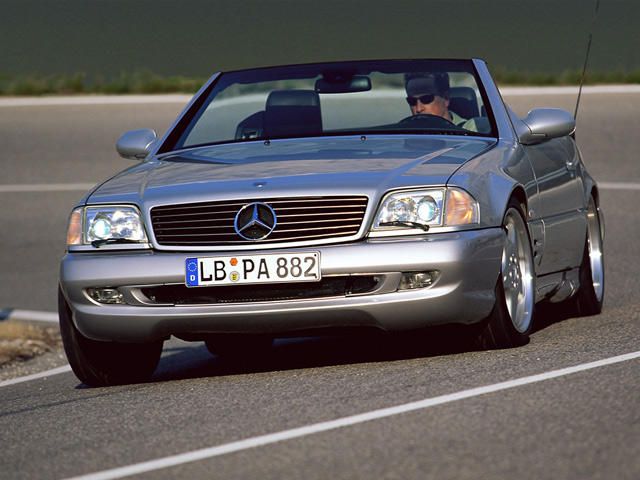
Bruno Sacco, one of Daimler's most influential post-war designers, was responsible for the transition from the 18 year old R 107 model to the R 129. From the front the change is clear: no more three-pointed star with two metal stripes stretching out from both sides. Instead, the star is surrounded by seven stripes. To complete the front-end's revival, two new almost square headlamps were adopted. However, they weren't relatively big and dominant as were the headlamps from previous models.
Sacco gave the R 129 a modern and dynamic look with a windscreen slanted sharply backwards, and the front grille is also tilted backwards. The stance is more aggressive, but the overall visual impression is of a more rounded car with less sportive ambitions. The hood is sleek without any bulges. The antiquated interior design, with the large round gauges from the '50s and old materials from the '60s was replaced with one unit of three smaller gauges with modern fonts. The round air vents gave way to almost invisible rectangular units, and the center console became a command center for various ancillaries that were popular at the time.
The car remained a two-seater though two small rear seats, suiting for babies, were installed. As far as engines were concerned, the R 129 had quite a few inline-sixes, V8s, and even the first V12 engine in an SL. Another first for the series was the automatic roll-over bar which was used for the first time in a road car. So as not to impair open-top driving pleasure with a permanently installed, rigid roll bar, a flexible solution was realized which activates the roll-over protection only if needed. When not in use the safety bar is deposited in front of the soft-top compartment.
When a roll-over threatens, the sensor-controlled roll-over bar is electromagnetically triggered, raised into position by the force of pre-compressed springs within 0.3 seconds and secured by pawls. The high-strength center pillars, connected over a large area with the rear longitudinal members, serve as a basis for mounting and as support. In addition to automatic triggering in an emergency, by means of a switch the driver can choose to raise and lower the bar slowly, with a hydraulic element carrying out the action. An ABS system was also a new innovative concept that later became a common feature in almost every car.


